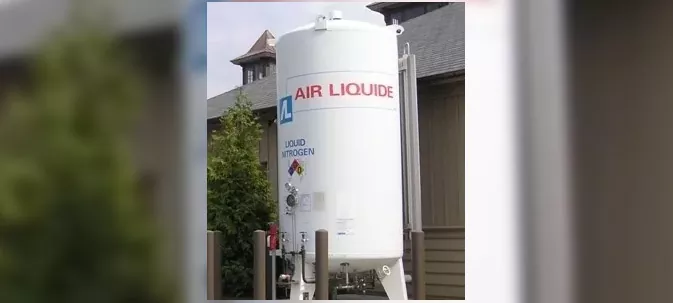Cryogenic Cooling Safety
 Liquid Nitrogen (L-N2), Liquid Carbon Dioxide L- CO2) and other cryogenic coolant coolants have potential risks but can easily be safely managed like many things in the lab. The effective and rapid cooling these fluids produce is a great convenience for thermal testing.
Liquid Nitrogen (L-N2), Liquid Carbon Dioxide L- CO2) and other cryogenic coolant coolants have potential risks but can easily be safely managed like many things in the lab. The effective and rapid cooling these fluids produce is a great convenience for thermal testing.
Similar to other potential hazards such as flammable liquids, electricity, hot surfaces, chemicals, etc. Cryogenic fluids can be safely used when aware of a few basic precautions. The main precautions are as follows:
- The extremely cold temperatures of cryogenic liquids can cause burns.
- Pressurized liquids and gasses require proper pressure regulation/venting.
- Tanks are often very heavy and pose risks should they fall over.
- In extreme cases, excessive use can displace breathable Oxygen in the air.
Taking Proper Precautions
When making or undoing connections to cryogenic fluids, always wear gloves and eye protection. Preferably heavy leather gloves full face shield. In General, the rule is hands-off of plumbing and devices at cryogenic temperatures.
Be aware of the controls/safety features of any cryogenic liquid delivery system. Know how to use these controls. Locate safety vents or ruptured disks that might unexpectedly produce a stream of cold vapor. Here is a supplier’s link with more detailed LN2 safety information and an explanation of the controls on a cryogenic liquid vessel. Tanks have many built-in safety devices to prevent over-pressurization and general safety.
Never tamper with any of the safety devices on a tank and do not adapt connections other than standard LN2 designated connections. Not just your eyes and flesh but many items in the lab become damaged or behave differently at these extremely cold temperatures. For example, typical foam pipe insulation from materials such as polyethylene becomes extremely brittle and shatters at temperatures of Liquid Nitrogen which is typically -185 C.
Be aware that cryogenic liquids expand dramatically and forcefully in the process of use and also during unintended vaporization in the hose. When connecting equipment to a source of cryogenic liquid, there is often an automatic valve at the downstream connection that is normally closed. After the system is used and the operator believes that he is safely shutting off the coolant source at the tank, an unsafe condition can be created. With a closed valve at both ends of a liquid-filled hose, the increasing pressure as the liquid warms can rupture the hose. The hand valve at the tank should only be closed when you are sure there is no cold liquid in the hose. For this reason, our LN2 hoses employ a pressure relief valve that will limit the maximum pressure to a safe level. Likewise, any device using coolant must have a functioning exhaust to vent the spent coolant.
The contents of high pressure (~900psi) CO2 tank are stored at room temperature so although the pressure is much higher in the hose, to begin with, it does not increase as it sits in the hose. You can close the hand valve on a CO2 tank at any time without risk.
LN2 tanks or dewars as they are known (vacuum insulated thermos-like bottles) rarely tip over due to the wider base but must be placed on a stable level footing. Slimmer High-pressure CO2 tanks are more prone to tip over and must always be restrained when stored in the lab for even short periods of time. The valve on the top of the tank can break if the tank falls over and cause very dangerous situations. LN2 tanks typically have a steel “halo” around the controls and ports at the tank. This increases the safety of many tank accidents.
CO2 and LN2 are both non-toxic and large parts of what we normally breathe. Use of these cryogenic fluids in a normally ventilated area is not a problem however if the ventilation is abnormally low or there is a very large amount of coolant being used, an Oxygen monitoring device should be used to monitor the Oxygen level in the room. Exit the room without delay if Oxygen levels go below 20%.
CONCLUSION
Cryogenic coolants like many things in the lab are easily handled in a safe and efficient manner by paying attention in general and being aware of a few basic concerns.





















